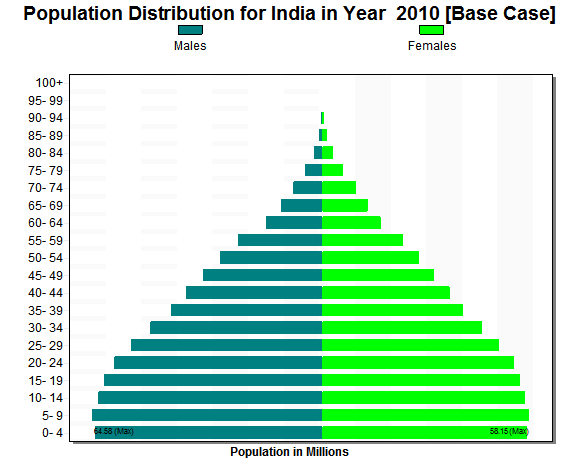International Futures Help System
Structure and Agent System: Demographic
|
System/Subsystem
|
Demographic
|
|
Organizing Structure
|
Cohort-component
|
|
Stocks
|
Population by age-sex
|
|
Flows
|
Birth, death, migration
|
|
Key Aggregate
Relationships
(illustrative, not comprehensive)
|
Life expectancy (from health model)
|
|
Key Agent-Class Behavioral
Relationships
(illustrative, not comprehensive)
|
Household fertility and migration |
Humans as individuals within households interact in larger demographic systems or structures. The computer model should represent the behavior of such households, such as decisions to have children or to emigrate. And it should represent the larger demographic structures that incorporate the decisions of millions of such households. A typical approach to representing such demographic systems is through age-sex cohort distributions (see the figure below showing an example from the model). IFs also uses fertility and mortality distributions by age and sex and tracks migration across countries.

Demographers have widely accepted the representation of demographic systems and the development of demographic models with cohort-component structures. In fact, the United Nations, the U.S. Census Bureau, and the International Institute for Applied Systems Analysis (IIASA), pre-eminent demographic forecasting institutions, all use cohort-component modeling (O’Neill and Balk 2001).
 International Futures at the Pardee Center
International Futures at the Pardee Center